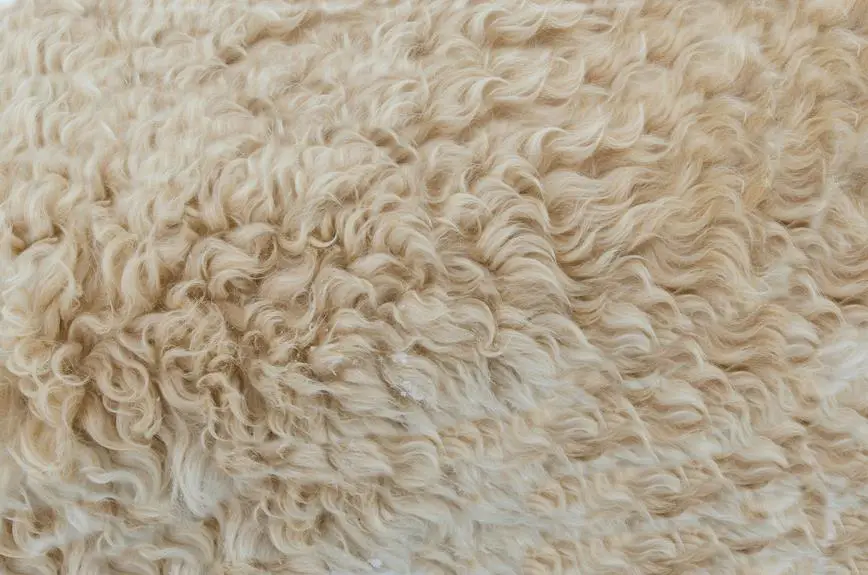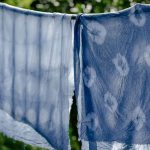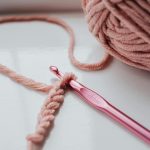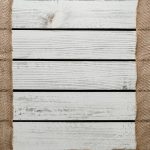When you're faced with the choice between cambric and cotton, it's essential to consider what you value most in fabric. Cambric might catch your eye with its delicate finish, perfect for dressy occasions, but you might wonder about its durability. On the other hand, cotton offers versatility and comfort, making it a go-to for everyday use. So, which fabric truly stands out for your needs? The answer might not be as straightforward as you'd expect, prompting a closer look at their unique attributes and applications.
Table of Contents
Overview of Cambric
Cambric is a lightweight, finely woven fabric that originated in Europe and is often used for shirts, handkerchiefs, and other delicate garments. You'll appreciate its soft texture and breathability, making it an ideal choice for warm weather. Traditionally made from linen, modern cambric can also be crafted from cotton or synthetic fibers, offering versatility in your wardrobe.
When you handle cambric, you'll notice its smooth finish, which adds a touch of elegance to any outfit. This fabric drapes beautifully, enhancing both casual and formal looks. If you're looking for something that feels luxurious against your skin, cambric won't disappoint.
Cambric's durability is another key feature; despite its lightweight nature, it can withstand regular wear. However, you should take care when washing it to maintain its quality. A gentle cycle and air drying are often recommended to prevent damage.
Overview of Cotton
Cotton is a versatile, natural fiber celebrated for its softness, breathability, and durability, making it a staple in wardrobes worldwide. You'll find cotton in everything from casual tees to formalwear, thanks to its comfort and ability to adapt to various styles.
Here's a quick comparison of cotton's key attributes:
| Attribute | Description |
|---|---|
| Softness | Gentle on the skin, perfect for daily wear. |
| Breathability | Allows air circulation, keeping you cool. |
| Durability | Strong and long-lasting, ideal for everyday use. |
| Versatility | Suitable for various garments, from summer dresses to winter layers. |
Cotton's ability to absorb moisture makes it an excellent choice for hot weather, as it keeps you feeling fresh. Additionally, it's easy to care for; most cotton garments can be machine washed and dried without hassle. Its natural fiber content also means it's biodegradable, making it a more eco-friendly choice compared to synthetic alternatives. So, when you're choosing fabrics, cotton stands out for its practical benefits and timeless appeal.
Key Differences Between Fabrics
When comparing cambric and cotton, you'll notice key differences in their fabric composition, durability, and breathability.
Each fabric offers unique benefits that can impact your choice for various applications.
Understanding these differences will help you decide which one suits your needs best.
Fabric Composition Comparison
Typically, fabric composition plays a crucial role in determining the texture, durability, and overall performance of the material you choose.
Cambric and cotton, while both cotton-based, differ significantly in their composition and characteristics. Cambric is a lightweight, plain-woven fabric made from carded cotton, resulting in a smooth, crisp texture. This gives it a refined look, making it popular for delicate garments and intricate details.
On the other hand, cotton is a broader term that encompasses various types of fabrics, ranging from lightweight muslins to heavier denim. Pure cotton is soft and breathable, ideal for everyday wear. It has a more relaxed feel compared to cambric, which can make it more comfortable for casual clothing.
When choosing between cambric and cotton, consider your intended use. If you're after a structured look with a slight sheen, cambric is your best bet. However, if you prefer something softer and more versatile, cotton offers a range of options that can cater to various styles and purposes.
Ultimately, understanding these fabric compositions will help you make a more informed decision.
Durability and Longevity
Durability and longevity are crucial factors to consider when comparing cambric and cotton fabrics, as each offers distinct benefits for different uses.
Cambric is known for its tight weave and smooth finish, making it quite durable for lightweight applications. This fabric can withstand regular wear and tear, which is ideal for items like shirts and blouses that require a refined appearance without sacrificing strength.
On the other hand, cotton is a natural fabric that varies in durability depending on its weave and quality. While standard cotton can wear out faster under heavy use, higher-quality cotton blends can offer impressive longevity. Cotton's ability to absorb moisture can lead to deterioration if it's not cared for properly, but when maintained, it can outlast many synthetic alternatives.
When deciding between the two, consider how you'll use the fabric. If you need something lightweight yet robust, cambric might be your best bet.
However, if you're looking for something versatile for everyday wear, investing in high-quality cotton could yield better long-term results. Ultimately, your choice will depend on your specific needs and lifestyle.
Breathability and Comfort
Breathability is one of the key differences between cambric and cotton, impacting your comfort level in various settings. When you wear cambric, you'll notice its tightly woven texture. This makes it less breathable than cotton, which can lead to discomfort in warmer weather or during physical activities.
If you're looking for a fabric that allows for airflow and helps regulate your body temperature, cotton is the better option. Cotton's natural fibers create a more open weave, promoting ventilation and moisture absorption. This means it wicks sweat away from your skin, keeping you cooler and more comfortable throughout the day.
Whether you're lounging at home or out and about, cotton's breathability helps you feel fresher. On the other hand, if you're considering cambric for formal wear or structured garments, its crispness and smooth finish can provide a sophisticated look. Just keep in mind that you might feel warmer wearing it for extended periods.
Ultimately, your choice between cambric and cotton will depend on your priorities. If comfort and breathability are your main concerns, cotton should be your go-to fabric.
Pros and Cons of Cambric
Cambric often impresses with its smooth texture and lightweight feel, making it a popular choice for various garments and home textiles. However, like any fabric, it comes with its own set of pros and cons that you should consider before making a decision.
| Pros | Cons |
|---|---|
| Soft and smooth feel | Can be less durable |
| Lightweight and breathable | Prone to wrinkling |
| Easy to dye and print | Limited stretch |
| Affordable | May shrink in wash |
On the positive side, cambric is soft and smooth against your skin, providing comfort for daily wear. Its lightweight nature allows for breathability, which is ideal for warm weather. Plus, it's often affordable and easy to dye, letting you choose vibrant colors.
However, cambric's drawbacks can't be overlooked. It isn't the most durable fabric, meaning it might wear out faster than some alternatives. Additionally, it can wrinkle easily and lacks stretch, which may affect fit. Lastly, if you're not careful with washing, it could shrink. Weigh these factors to see if cambric fits your needs!
Pros and Cons of Cotton
When comparing fabrics for your wardrobe or home, cotton stands out with its own unique advantages and disadvantages that are worth considering.
One of cotton's biggest pros is its breathability. It allows air to circulate, making it comfortable to wear in hot weather. Plus, it's soft and gentle on your skin, which is especially important for items like bedding and clothing. Cotton is also highly absorbent, which is great for towels and activewear.
However, cotton has its downsides. It can wrinkle easily, requiring frequent ironing to maintain a neat appearance. Additionally, cotton fabrics may shrink when washed, especially if you don't follow the care instructions. Another consideration is that conventional cotton farming often relies heavily on pesticides and water, raising sustainability concerns.
In terms of durability, while cotton is strong, it may wear out faster than some synthetic fabrics, particularly in high-stress areas. Finally, cotton can be less resistant to stains, meaning spills can be more challenging to clean.
Understanding these pros and cons can help you make informed choices when selecting cotton for your needs.
Best Uses for Each Fabric
When choosing between cambric and cotton, it's important to consider their specific applications.
Cambric works great for lightweight garments and delicate projects, while cotton shines in everyday clothing and household items.
Let's explore the best uses for each fabric to help you make the right choice.
Cambric Fabric Applications
Understanding the unique qualities of cambric fabric allows you to choose the best applications for it, enhancing both style and functionality in your projects.
Cambric's lightweight, smooth texture makes it an excellent choice for elegant clothing items like blouses, dresses, and children's apparel. Its breathable nature also ensures comfort during warmer weather.
You'll find cambric used in home décor, too. Consider it for sheer curtains, tablecloths, or decorative pillow covers, where you want a refined look without overwhelming bulk. Its fine weave gives a polished finish that elevates any space.
When it comes to crafting, cambric is perfect for delicate projects like handkerchiefs, tote bags, or soft toys. The fabric's durability means it withstands everyday use while maintaining its charm.
If you're into quilting, cambric can serve as a great backing or as part of the design, allowing for intricate patterns without adding weight.
Cotton Fabric Uses
Cotton fabric is renowned for its versatility, making it ideal for a wide range of applications, from casual wear to home textiles. You'll find cotton in everything from t-shirts and jeans to sheets and towels. Its breathability and softness make it a favorite for clothing, especially during warmer months.
Here's a quick overview of some of the best uses for cotton fabric:
| Use | Description |
|---|---|
| Apparel | Perfect for everyday wear like shirts, dresses, and activewear due to its comfort and breathability. |
| Home Textiles | Ideal for bedding, curtains, and upholstery, offering a soft touch and easy maintenance. |
| Baby Products | Safe and gentle for baby clothes, blankets, and diapers, ensuring comfort against delicate skin. |
With its durability and ease of care, cotton remains a top choice for many. Whether you're dressing up or decorating your space, it's hard to go wrong with cotton. Its natural properties truly make it a fabric for all occasions.
Frequently Asked Questions
Can Cambric Be Machine Washed Safely?
Yes, you can machine wash cambric safely. Just use a gentle cycle with cold water and mild detergent. Avoid high heat when drying to keep it looking great. Always check the care label for specific instructions.
Is Cotton More Eco-Friendly Than Cambric?
When considering eco-friendliness, cotton often wins due to its natural growth and biodegradability. However, sustainable practices in cambric production can also make it a viable choice. You'll need to assess each option carefully.
What Is the Origin of Cambric Fabric?
Cambric fabric originated in Cambrai, France, during the 17th century. You'll find it's a lightweight, plain-weave cotton or linen, often used for shirts and handkerchiefs. Its smooth texture makes it popular in various textile applications.
How Does Cambric Compare in Price to Cotton?
When comparing prices, you'll find cambric often costs more than cotton due to its finer quality and craftsmanship. However, prices can vary based on the brand and source, so it's worth shopping around.
Are There Hypoallergenic Options for Both Fabrics?
Yes, you can find hypoallergenic options for both fabrics. Look for organic or specially treated varieties that reduce allergens. Always check labels to ensure they meet your sensitivity requirements, keeping your skin comfortable and irritation-free.
- Tetron Fabric for Marine Applications: Durability and Use Cases - June 18, 2025
- Tetron Fabric for Outdoor Furniture: Weather Resistance and Care - June 18, 2025
- Tetron Fabric for Wall Coverings: Style and Application Tips - June 18, 2025







